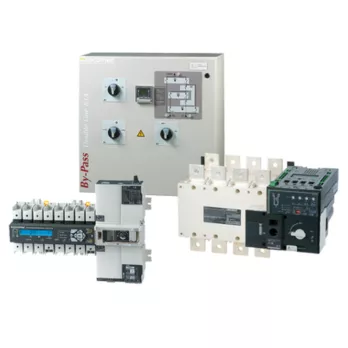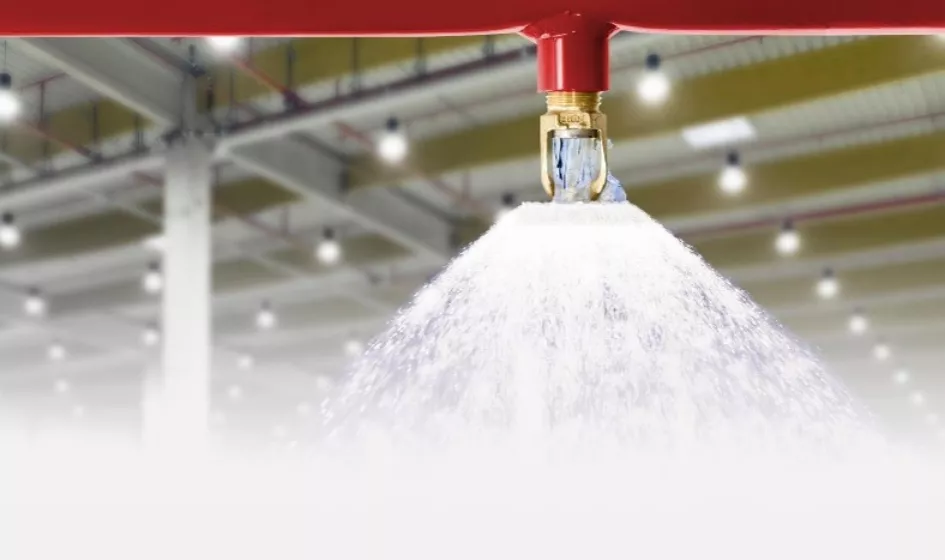Have you made the switch?
There has been a major change in British installation standards regarding life safety services in accordance with BS8519 : 2020 – and that change is in effect now.
What’s changed?
Contactors or circuit breakers can no longer be used for life safety ATS.
Why not? Because they are no longer compliant under BS8519.
The amended code of practice determines that ATS should be a single component within an integrated controller from the same manufacturer.
Who is responsible?
Responsibility does not lie solely with companies and company Directors. Any individual within the build chain or anyone with control of the premises is responsible for ensuring compliance.
What this means is that any person who has been involved in the specification, design, installation or management is responsible for fire safety in business or other non-domestic premises – including electrical consultants and contractors, facilities and buildings managers, managing agents, risk assessors, employers, occupiers, landlords and owners.
This change means that everyone is responsible for ensuring that there is no deviation from the regulations – and the penalties for non-compliance are significant.
For major penalties, unlimited fines and custodial sentences of up to 2 years are in place now, with fines of up to £5000 for less major penalties.
Product Standards v Installation Rules – what’s the difference?
It’s important to understand the difference between standards and installation rules – particularly in relation to Transfer Switching Equipment in life safety applications.
- Product standards ensure that the manufacturer of the product or unit fully tests and certifies the complete assembly.
- Installation rules relate to the contractor’s site installation responsibilities.
What does this mean in terms of practical application? It’s critical to select a product and manufacturer that ensure full compliance for both the product and wider installation – not simply that one aspect of a product standard is compliant. When only one aspect is compliant, this introduces non-compliance elsewhere within the installation and also introduces risk of fire and danger to life.
Unfortunately, it’s not uncommon to see situations whereby an organisation has installed ATS equipment believing it to be compliant, later finding that it’s only compliant in terms of one aspect of a product standard – and not in terms of the wider installation. Not only does this pose a significant risk to the asset, but creates significant risk to life. When selecting manufacturing partners and products it’s critical to ensure that compliance extends to all relevant areas.”
How can you ensure compliance?
Follow the BSI Standards Publication: BS8519: 2020 Code of Practice, which states:
Changeover devices should conform to BS EN 60947-6-1 and should be based on switch technology (PC Classification) rather than circuit breakers or contactors. The Automatic Transfer Switch (ATS) should be a single component with integrated controller from the same manufacturer.”
“Where occupation of the building is conditional upon the availability of the life-safety and firefighting equipment, a single or dual bypass arrangement should be provided to enable the changeover device to be maintained without loss of service for the critical plant.”
The ATS integral switch within the assembly must be compliant to BS 8519 and also IEC 60947-6-1.
Socomec Enclosed ATS Assemblies

With over 3 million installations using Socomec Transfer Switches – and the technology being in its fifth generation – Socomec’s systems are proven in the field, ensuring safety and compliance.
Every enclosed bypass unit from Socomec is fully type tested and certified as required by BS 8519:2020, with the ATS switch itself being compliant to IEC 60947-6-1 and the overall enclosed low voltage assembly being compliant to IEC 61439-2. These systems allow for maintenance of the ATS without interrupting the supply.
ATS are often located on the roof or outdoors, however, mild steel enclosures rust when the paint is chipped and specifying IP65 is not always the best solution as the enclosure cannot breathe.
Socomec always recommends using a GRP enclosure and allowing 200mm around the ATS for sizing. The ATS bypass for fire safety must be located inside the fire safety zone.
Specific guidance for buildings over four storeys
The code of practice BS8519:2020 makes specific provision for buildings over four storeys, referencing recommendations in BS9999: 2017 with regard to the design and installation of the electrical distribution for life safety and firefighting equipment.
All buildings over four storeys must have life safety services such as a fire fighting lifts and sprinklers.
Again, these must be fed via a bypass with a compliant BS 8519 ATS inside.
- Changeover devices should conform to BS EN 60947-6-1 and should be based on switch technology (PC Classification) rather than circuit breakers or contactors.
- The Automatic Transfer Switch (ATS) should be a single component with integrated controller from the same manufacturer.




